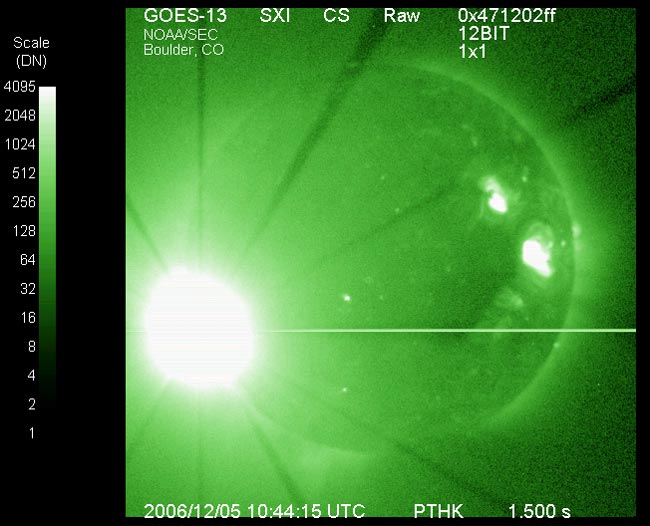Solar Radio Bursts Could Cripple GPS

Radio waves produced during solar flare eruptions on the Sun can cripple the Global Positioning System (GPS) and other communication technologies here on Earth, scientists say.
The finding, announced today at the first Space Weather Enterprise Forum in Washington D.C., was confirmed during an exceptionally strong solar eruption last December that produced 20,000 times more radio emissions than the Sun does normally.
During solar flares, high-energy electrons are injected into the Sun's upper atmosphere. Radio waves are produced during this process and some of them propagate toward Earth. The solar radio waves, which cover a broad frequency range, act like noise that interferes with frequencies used by GPS and other navigational systems.
On December 6, 2006, a solar flare created the most intense solar radio burst ever recorded. Using equipment built at Cornell University, scientists made the first quantitative measurements of how solar radio bursts affect GPS receivers.
"This solar radio bursts occurred during the solar minimum, yet produced as much as 10 times more radio noise than the previous record," said Dale Gary, a physicist at the New Jersey Institute of Technology. "This was enough to swamp GPS receivers over the entire sunlit side of Earth."
The scientists predict that larger solar radio bursts, expected during heightened periods of solar activity, called the solar maximum, will disrupt GPS receiver operations even further.
"The size and timing of this burst were completely unexpected and the largest ever detected," said Anthea Coster of the MIT Haystack Observatory. "We do not know how often we can expect solar radio bursts of this size or even larger."
Breaking space news, the latest updates on rocket launches, skywatching events and more!
- Image Gallery: HOT STUFF: Solar Flares
- Sun's Activity Increased in Past Century, Study Confirms
- Solar Flare Hits Earth and Mars
Ker Than is a science writer and children's book author who joined Space.com as a Staff Writer from 2005 to 2007. Ker covered astronomy and human spaceflight while at Space.com, including space shuttle launches, and has authored three science books for kids about earthquakes, stars and black holes. Ker's work has also appeared in National Geographic, Nature News, New Scientist and Sky & Telescope, among others. He earned a bachelor's degree in biology from UC Irvine and a master's degree in science journalism from New York University. Ker is currently the Director of Science Communications at Stanford University.
